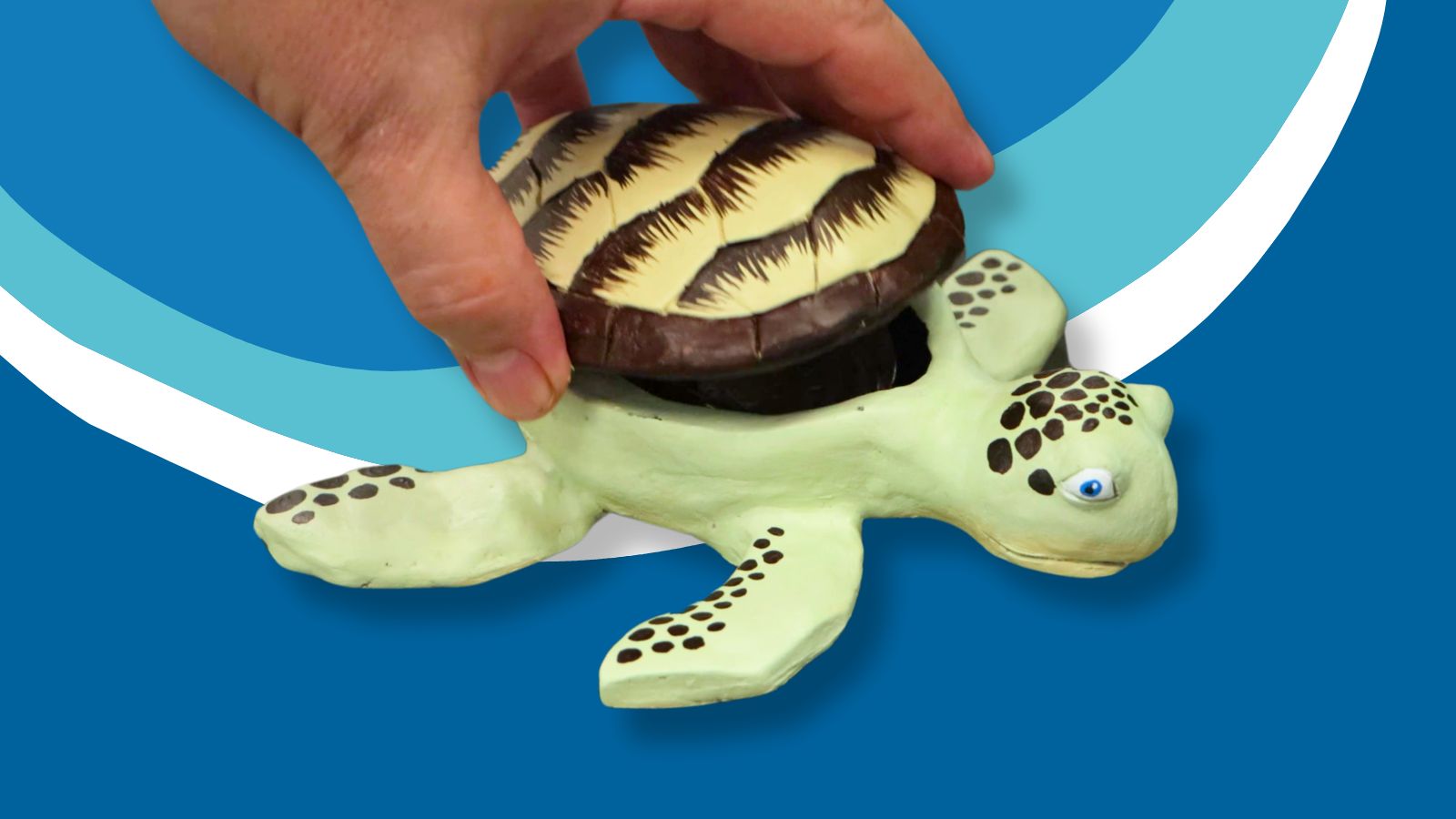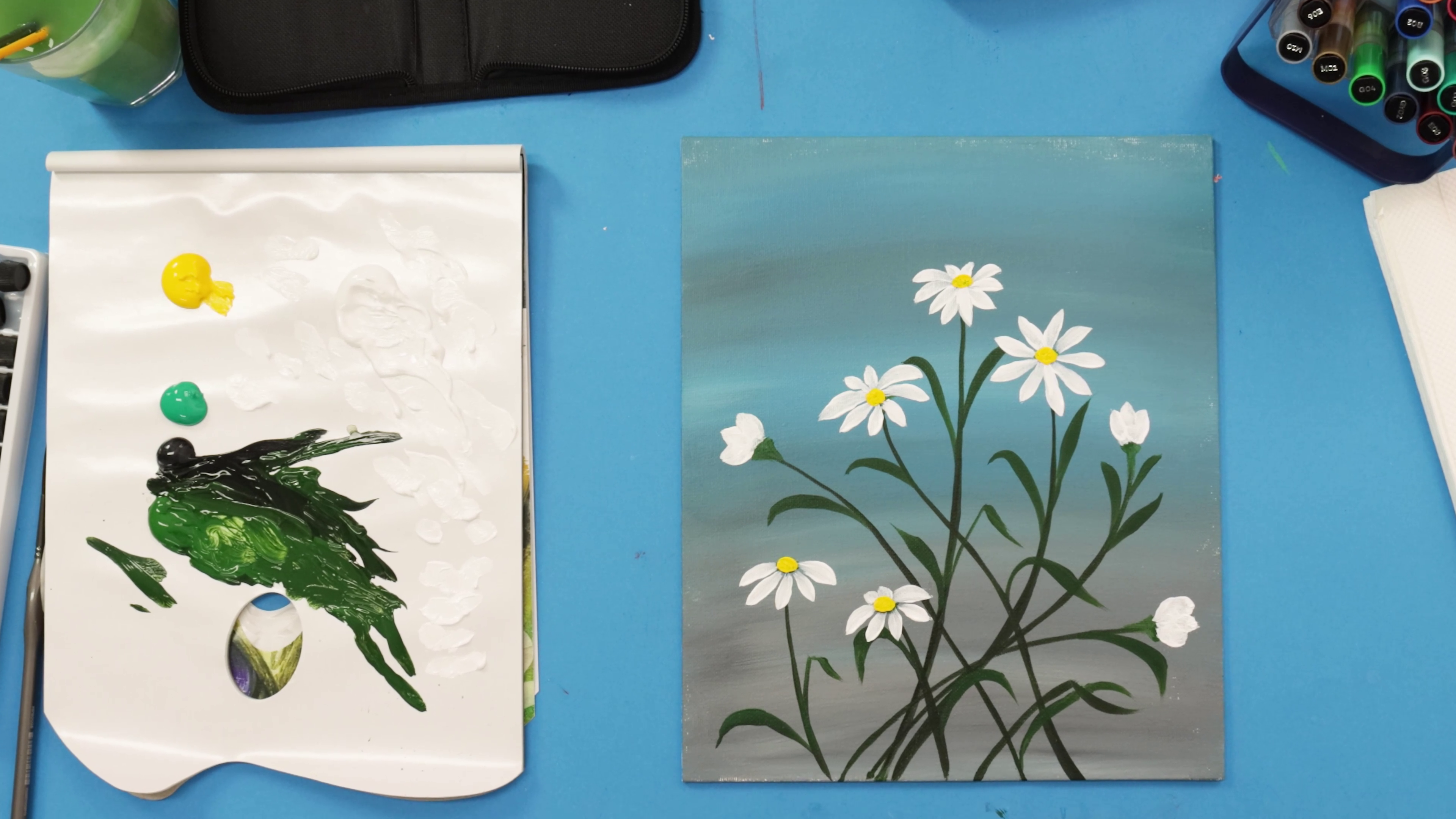4 DIY Easter Crafts
Get into the Easter spirit with these eggs-cellent DIY Easter crafts! From paint pour Easter eggs to polymer clay earrings, the whole family will have fun making these easy Easter crafts! Follow along with our video and step by step guides below.
Extra materials you’ll need:
- Small plate for baking clay
- Earring hoops
- Plain piece of paper
To create the earring base, take the Silver polymer clay. Press it flat onto the plate to make the thickness consistent. In this project, we used the handle of a small hobby knife to flatten the clay, but a round pencil could be used.

Once the clay is flattened to your desired thickness, cut an egg-shaped template using a piece of paper. Use the template to cut two egg shapes out of the polymer clay, removing the offcut clay.

Take some Metallic Blue clay and roll it flat. Cut a straight edge, removing the offcut clay. Lay the sheet about one third of the way up the egg shapes. Use the hobby knife handle or round pencil to roll and adhere the band to each egg. Carefully remove the offcut clay.

Roll out a sheet of Metallic Red clay and cut a straight edge. Place it onto the top third of the egg and roll it flat. Cut to shape around the egg and remove the offcut clay.

Take the Metallic Blue clay again and cut two thin bands. Place it across the egg, just below the red section and cut. Cut to shape around the egg and remove the offcut clay.

Repeat the process using Metallic Pink clay and lay the band below the Metallic Blue strips. Once in position, remove the offcut clay from each side of the egg.

To add spots, roll out a very small log out of Metallic Red clay and cut six tiny sections. Lay three in between the pink band and the blue base colour of the egg. Squash them gently to create circular shapes. Repeat for the second egg earring.

To add extra detail, roll out a very small log of gold clay and cut six tiny sections. Place these over the red dots on each egg and gently squash using the palette knife.

Roll over both eggs to flatten any thick pieces. Then, use a pencil to poke a hole in the top of each earring.

Bake the earrings at 130 degrees Celsius for 30 mins.
Once baked, thread the earring hoops through the holes and you’re done!


Extra materials you’ll need:
- A tall glass
Lay the plastic palette down as your workspace. This will protect the surface underneath from clay and make it easy to spin and work on different angles.
Start by cutting the block of clay in half and shape it into a circular cup shape.

Once the clay is the desired shape, use your thumbs to press into the centre to make a dish shape. This is also called a pinch pot. Take your time to shape it and ensure the walls are at least 1cm thick.

If your hands dry out the clay, wet your hands with water and smooth them over the clay.

Lay the leftover slab onto its side and cut two 1cm thick blocks. Cut two bunny shaped ears from the blocks. To do this, cut the corners of each slab so that they make diamond-like shapes with one end cut flat. Round the edges of the ears then attach each ear to the bowl.

To make the ears bond to the dish, cut out a section from the dish and insert the ears into the cut. Smooth the clay where the dish joins the ears.

Next, cut markings for the face. Create a triangle shape for the nose. Draw a line from the bottom of the nose and carve out the mouth from each side of the bottom line. Create two eyes with crescent-shaped semicircular lines.


To make adding detail easier, you can place the dish upside down on a tall glass. Define the mouth and add small lines for whiskers.

Leave the bunny dish to dry for 24 hours. Once it is bone dry, you can start painting it using any colours you like.
In this tutorial, we chose to paint black inside the dish, taking the paint up 1cm from the edge.

Paint over the facial features with black so that the creases are filled. Leave these coats to dry.

Squeeze out some Red Titanium White and Yellow Ochre and mix to create a warm pink colour. Paint over the face, leaving pink out of the creases. Apply a few coats to cover the black base.

Paint the rest of the bunny with pink and leave to dry!

Extra materials you’ll need:
- 6 boiled eggs and the carton
- 4 small cups
- Paper towels
- Blu Tac
- Sheet of thick paper
Start by preparing the paint. As you’re pouring onto a 3D surface, keep the paint quite thick. So, a rough ratio would be 1 part paint to 3 parts pouring medium.
Pour the medium into each cup, followed by four different colours, and stir using the palette knife. We used primary colours in this tutorial, but you can choose your own combination.



Take the egg carton and flip it upside down. Create 6 ring shapes with the Blu Tac and place them onto the six egg holders on the carton.

Set the eggs on the rings, making sure there is a little space between them and the carton. Place a thick piece of paper underneath to catch the excess paint.

Begin pouring one colour slowly over the centre of an egg. Cover the rest of the eggs with this first layer.

Choose a second colour and slowly pour a bit of paint over the first layer.

Continue layering the colours over each egg until they are all covered in paint.

Set them aside to dry. Once the painted eggs are completely dry, gently pull off the Blu Tac and lay them aside.

Turn the carton over so that it’s upright and fill a cup with red paint. This mix can be made to a ratio of 1 part paint to 1 part medium.
Dip the end of each egg that wasn’t layered in paint and place them into the carton dry side down. You’re done!


Begin by cutting off three-quarters of the clay from the slab. Knead the clay into a round bun shape.

Once you’re happy with the shape, cut the bun in half with the palette knife. Mould one half of the clay into a cup shape.

Press the bun shape out so that the thickness is consistent. Flatten out the top edge with the blade of the palette knife. You can dip your hands in water to help smooth the clay.

Follow the same process for the other half of the bun. Lay the two halves together and smooth them out so that it forms a round shape.

Create the cross, roll a small log and lay it flat on the board. Use the palette knife to cut it in half.

Spray with a little bit of water and shape so that it is smooth but slightly raised.

Lay it across the top of the bun and cut the excess off. Place the excess over the other strip to make a cross. Smooth the strips out a little bit.

To make raisins on top of the bun, roll some little balls of clay and press them onto the surface. Smooth over the top with the brush handle.

Allow the bun to dry partially. This is called the leather stage and takes about 12 hours. Once partially dry, remove the lid and give it a final smooth on the edges that join. Leave these apart and allow them to dry completely.

To paint the bun, squeeze out some Titanium White, Yellow Ochre and Burnt Sienna. Roughly mix the colours on the board and paint the bun directly. This will make the colours look less flat and more realistic.

For the cross, use Titanium White with a touch of Yellow Ochre to make an off-white colour and carefully paint over the cross.

Then, paint the raisins using Black mixed with a little Titanium White. In this tutorial, we decided to add a gloss medium over the top of the bun as a glaze, but this step is optional.


Material List
- Palette Knife Signature No.11
- Acrylic Palette Signature 30 x 40cm (12 x 16in)
- Air Hardening Modelling Clay Premium - Terracotta 500g (1.1lb)
- Acrylic Colour Paint Signature 75ml (2.5 US fl.oz) - Burnt Sienna
- Acrylic Colour Paint Signature 75ml (2.5 US fl.oz) - Titanium White
- Acrylic Colour Paint Signature 75ml (2.5 US fl.oz) - Lamp Black
- Acrylic Brushes Signature 4pc
- Acrylic Colour Primary Paint Set Signature 6pc x 50ml (1.7oz)
- Acrylic Flow Medium Premium 500ml (16.9oz)
- Air Hardening Modelling Clay Premium - White 500gms
- Acrylic Colour Paint Signature 75ml (2.5 US fl.oz) - Brilliant Red
- Acrylic Colour Paint Signature 75ml (2.5 US fl.oz) - Yellow Ochre
- Make n Bake Polymer Clay Signature Metallic 100g (3.5oz)




































